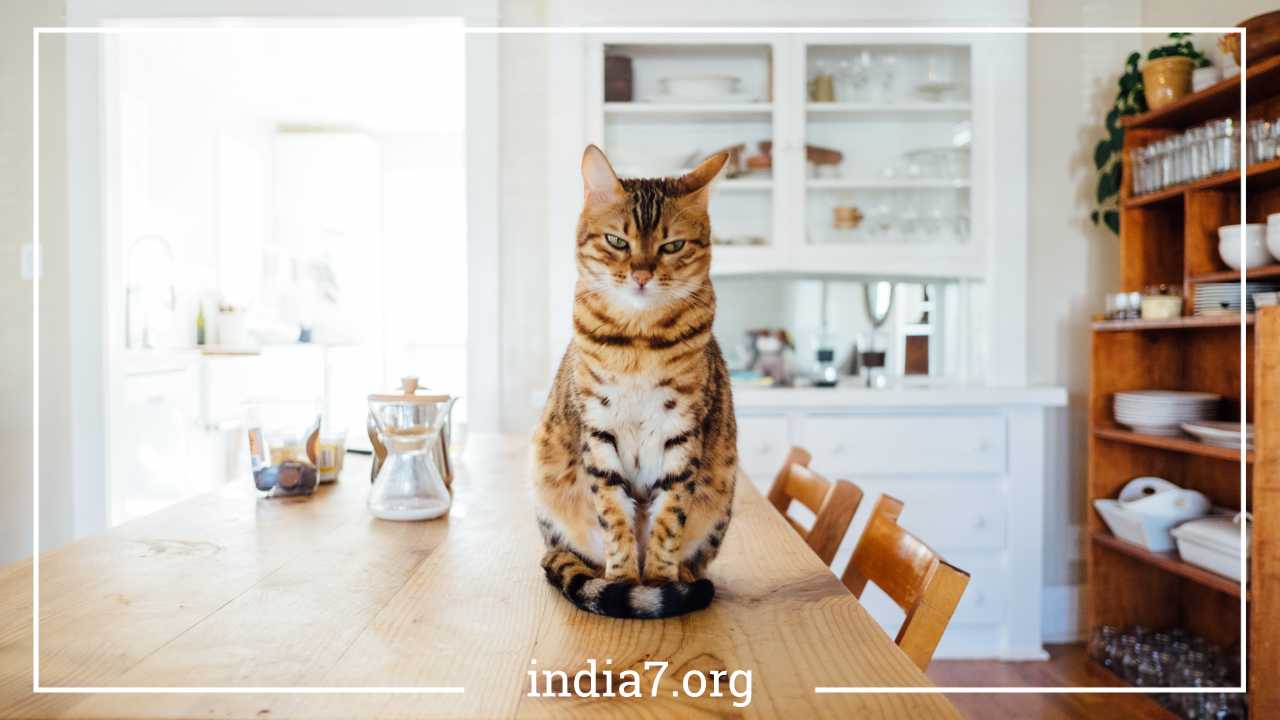Feline Diabetes in Cats: Comprehensive Guide to Understanding, Managing, and Treating

Diabetes in Cats
Cats hold a special place in the hearts of millions of people across North America and around the world. Renowned for their independent yet affectionate nature, cats make wonderful companions. However, like all pets, cats can fall prey to various health issues, and one of the more prevalent and concerning conditions is feline diabetes.
This comprehensive guide will explore feline diabetes in-depth, covering its causes, symptoms, diagnosis, treatment options, prevention, and how to provide the best care for your diabetic feline friend.
Chapter 1: Understanding Feline Diabetes
Feline diabetes is a metabolic disorder that affects a cat’s ability to regulate blood sugar levels. To fully grasp this condition, it’s essential to understand the basic mechanisms at play.
- The Role of Insulin: In a healthy cat, the pancreas produces insulin, a hormone responsible for regulating blood sugar (glucose) levels. Insulin facilitates the transfer of glucose from the bloodstream into the cells, where it is used for energy.
- When Insulin Production Falters: Feline diabetes occurs when the pancreas fails to produce enough insulin, or when the cat’s body becomes resistant to the effects of insulin. As a result, glucose accumulates in the bloodstream, leading to elevated blood sugar levels, a condition known as hyperglycemia.
Chapter 2: Types of Feline Diabetes
Feline diabetes can be categorized into two primary types:
- Type 1 Diabetes: This type is the most common in cats and is akin to human Type 1 diabetes. It occurs when the cat’s pancreas can’t produce enough insulin. Type 1 diabetes often requires insulin therapy for management.
- Type 2 Diabetes: This type is more similar to human Type 2 diabetes, where the cat’s body becomes resistant to the effects of insulin. Type 2 diabetes may initially be managed with diet and medication but may progress to require insulin therapy.
Chapter 3: Recognizing the Symptoms
Feline diabetes manifests with various symptoms, which can be subtle at first but become more pronounced as the condition progresses. Common symptoms include:
- Increased Thirst and Urination: One of the earliest signs is a noticeable increase in water consumption and more frequent urination. Cat owners may find themselves refilling the water bowl frequently.
- Weight Loss: Despite a seemingly normal or even increased appetite, diabetic cats may lose weight. This is due to the body’s inability to properly use glucose for energy.
- Lethargy: Diabetic cats may become lethargic and less playful than usual.
- Poor Coat Condition: The cat’s fur may become dull and unkempt, losing its usual shine and softness.
- Vomiting and Dehydration: Advanced cases of feline diabetes can lead to vomiting and dehydration, which require immediate medical attention.
Chapter 4: Diagnosis of Feline Diabetes
Diagnosing feline diabetes involves a combination of clinical signs, blood tests, and urinalysis. The key diagnostic tests include:
- Blood Glucose Levels: Elevated blood glucose levels are the hallmark of feline diabetes. Repeated blood glucose tests are necessary for an accurate diagnosis.
- Urinalysis: Urine samples can reveal the presence of glucose in the urine, a condition known as glucosuria, which is a strong indicator of diabetes.
- Fructosamine Levels: This blood test measures the average blood glucose levels over the previous few weeks, providing a more comprehensive picture of the cat’s glucose regulation.
Chapter 5: Treatment Options for Feline Diabetes
Managing feline diabetes is crucial for the cat’s health and well-being. The primary treatment options include:
- Insulin Therapy: Most diabetic cats require insulin injections to regulate their blood sugar levels. Insulin is administered subcutaneously, and your veterinarian will determine the appropriate type and dosage.
- Dietary Management: Specialized diabetic cat food may be recommended. These diets are formulated to help regulate blood sugar levels and may contain controlled levels of carbohydrates.
- Weight Management: If obesity is a contributing factor, weight loss through a balanced diet and controlled portions can aid in managing feline diabetes.
- Regular Monitoring: It’s essential to monitor your cat’s blood glucose levels regularly, typically with at-home glucose monitoring kits or through scheduled veterinary visits.
Chapter 6: Administering Insulin to Your Cat
Insulin administration can be intimidating for cat owners, but with proper guidance, it becomes routine. Here’s a step-by-step guide:
- Consult Your Veterinarian: Your veterinarian will prescribe the appropriate insulin type and dosage for your cat’s needs.
- Prepare the Insulin: Draw the prescribed amount of insulin into the syringe. Ensure that the insulin is at room temperature, as cold insulin can be painful.
- Choose an Injection Site: The scruff of the neck or the flank is commonly used for injections. Alternate between sides to prevent irritation.
- Hold Your Cat Steady: Gently but firmly hold your cat in place. You may need assistance from a family member or friend.
- Administer the Injection: Pinch a small fold of skin at the chosen injection site. Insert the needle at a 45-degree angle and depress the plunger to inject the insulin.
- Release the Skin: After the injection, release the skin fold and withdraw the needle gently.
- Reward Your Cat: Offer a treat or some affection to reassure your cat.
- Dispose of Sharps Safely: Place used needles and syringes in a sharps container for safe disposal.
Chapter 7: Preventing Hypoglycemia
Hypoglycemia, or low blood sugar, is a potentially life-threatening condition that can occur if too much insulin is administered or if a cat hasn’t eaten adequately. Symptoms of hypoglycemia include weakness, confusion, tremors, and seizures. To prevent hypoglycemia:
- Administer Insulin After Eating: Always ensure your cat has eaten before giving an insulin injection.
- Monitor Blood Glucose Levels: Regularly check your cat’s blood glucose levels, especially when adjusting insulin doses.
- Have Emergency Supplies: Keep a source of fast-acting glucose on hand, such as honey or a glucose gel, in case of a hypoglycemic episode.
- Consult Your Veterinarian: If you suspect hypoglycemia or are unsure how to manage it, contact your veterinarian immediately.
Chapter 8: Living with a Diabetic Cat
Caring for a diabetic cat involves more than just insulin injections and monitoring. Here are some tips for providing the best possible care:
- Maintain Routine: Cats thrive on routine. Feed your cat at the same times each day and administer insulin as prescribed.
- Weight Management: If obesity contributed to your cat’s diabetes, work with your veterinarian to develop a weight management plan.
- Regular Veterinary Checkups: Schedule regular checkups to monitor your cat’s overall health and diabetes management progress.
- Stress Reduction: Minimize stressors in your cat’s environment, as stress can affect blood sugar levels. Provide a safe, quiet space for your cat to relax.
- Home Monitoring: Learn to monitor your cat’s overall well-being, including changes in appetite, water intake, and litter box habits.
Chapter 9: Complications of Feline Diabetes
Unmanaged feline diabetes can lead to various complications, including:
- Ketoacidosis: A severe, life-threatening condition characterized by high blood sugar levels and the presence of ketones in the urine.
- Infections: Diabetic cats are more susceptible to urinary tract infections and dental issues.
- Cataracts: Some diabetic cats may develop cataracts, leading to vision problems.
- Neuropathy: Nerve damage can occur over time, affecting the cat’s coordination and hind limb function.
- Organ Damage: Prolonged high blood sugar levels can damage organs like the kidneys and heart.
Chapter 10: The Prognosis for Diabetic Cats
With proper care and management, many diabetic cats can enjoy a good quality of life. However, it’s essential to understand that diabetes is a chronic condition that typically requires lifelong treatment. The prognosis depends on several factors, including the cat’s overall health, the presence of complications, and the owner’s dedication to treatment.
Chapter 11: Preventing Feline Diabetes
While not all cases of feline diabetes can be prevented, there are steps you can take to reduce the risk:
- Dietary Choices: Feed your cat a balanced diet and avoid excessive treats or high-carbohydrate foods.
- Regular Exercise: Encourage physical activity through play and exercise to help maintain a healthy weight.
- Weight Management: Keep your cat at a healthy weight to reduce the risk of obesity-related diabetes.
- Regular Vet Visits: Schedule routine veterinary checkups to detect early signs of diabetes or other health issues.
Chapter 12: Conclusion
Feline diabetes is a manageable condition that requires commitment, understanding, and diligence from cat owners. With the right treatment, lifestyle adjustments, and a supportive veterinary team, your diabetic cat can lead a fulfilling and happy life. Regular monitoring, a well-balanced diet, and insulin therapy can help your beloved feline companion maintain stable blood sugar levels and enjoy many more years of love and companionship.



